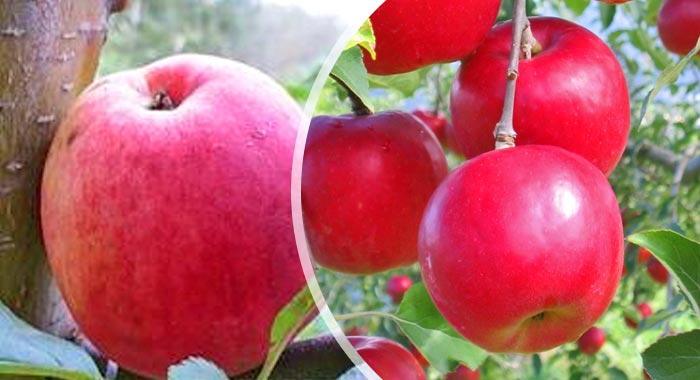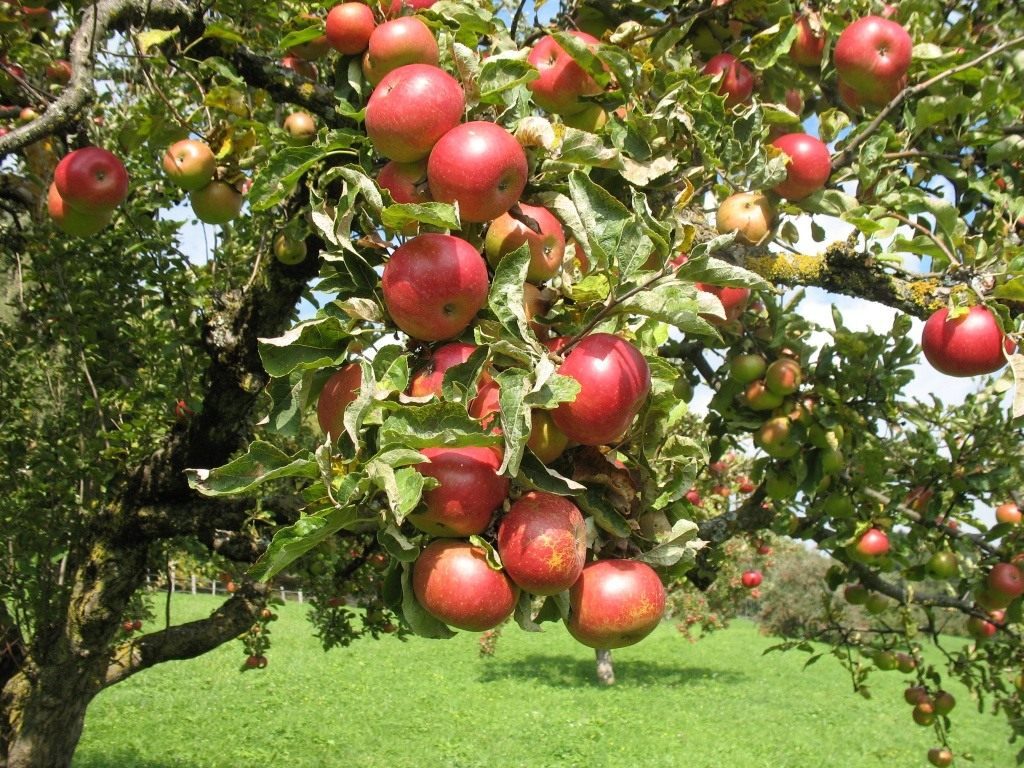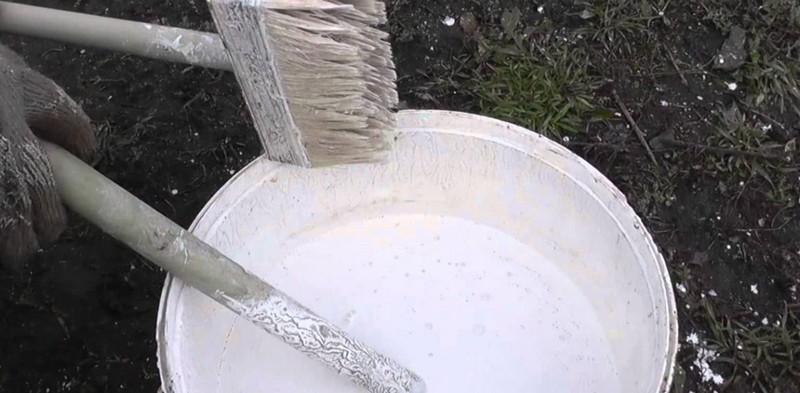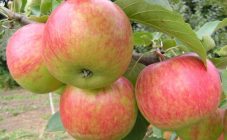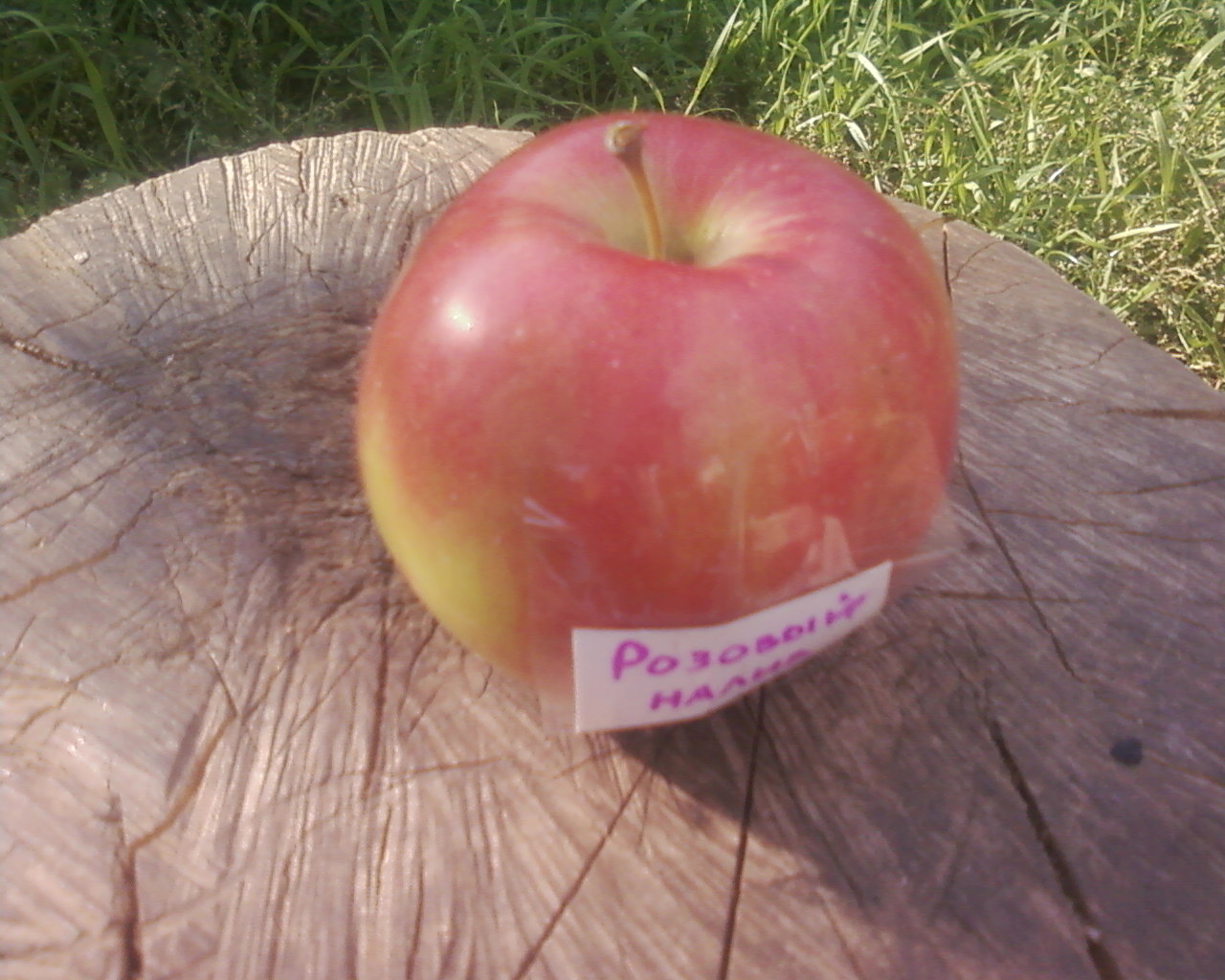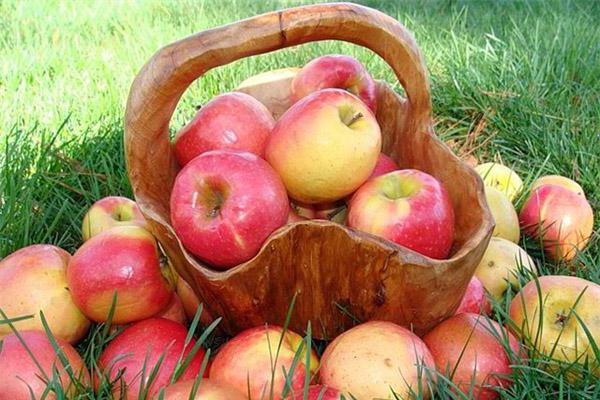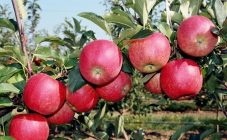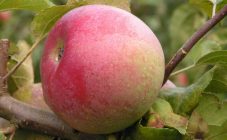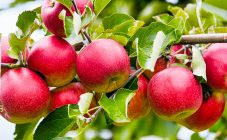Among the varietal variety of apple trees, it is sometimes difficult to choose one that meets all the gardener's needs. Some trees are resistant to cold weather, others have beautiful tasty fruits, and still others are immune to disease. But there are also universal varieties that combine several advantages at once. These include the cultivar with the beautiful name Aphrodite. This is a relatively recently obtained variety that has gradually spread both in Russia and the CIS.
Variety history
Aphrodite is a winter-hardy table apple variety, introduced into the collection of the All-Russian Research Institute of Fruit Crops relatively recently - in 1981. It took 25 years to test the new variety in the Central Black Earth Region and on the Lower Volga. As a result of breeding, the variety acquired a number of stable beneficial qualities, in particular, the content of the immune Vf gene. It makes the apple tree immune to 5 types of scab fungus.
Varietal features
Aphrodite is a self-fertile variety, requiring the proximity of a pollinator-partner. For this purpose, two varieties are suitable: Kurnakovskoe, also a self-fertile tree, and later Stroevskoe. The choice of these particular cultivars is due to the coincidence of the timing of fruiting and flowering with Aphrodite. These varieties are also scab resistant.
The life span of the Aphrodite apple tree is about 60 years. The tree begins to bear fruit from 4-5 years. Having entered the season of greatest productivity, Aphrodite boasts a yield of 150 kg from 1 trunk. Moreover, periodic declines in the abundance of the harvest have not been observed for many years.
Apple tree Aphrodite tolerates winter well, is resistant to temperature extremes and abrupt transitions from thaw to frost. The variety is resistant to fungal diseases, which makes preventive treatments unnecessary.
Consumer (full) ripeness of fruits occurs only 2-3 weeks after harvest, which falls in mid-late September. But, although the variety belongs to the early winter, it will not work to keep apples longer than 3 months without processing.
Trees of the Aphrodite variety are distinguished by fast growth, rounded, not very thickened crown. The formation of skeletal branches at right angles to the trunk makes the apple tree quite spreading. The bark of an adult tree is smooth, greenish in color. Young shoots are brown, with light pubescence. The height of the apple tree can reach 10 m.
Before flowering, small buds can be seen on the branches, pressed against the shoots. The largest will eventually develop into flowers, 4-6 pieces in an umbellate inflorescence.
The petals of the buds are painted in a pale pink color, after opening they become almost white. The flowers are medium in size and shaped like saucers. In the center of each there are accrete pistils and anthers of 10-20 stamens.
Leaves appear at the same time with flowers, but grow more slowly, which is why they are almost invisible during the flowering period, being lost in a scattering of flowers. An adult, formed leaf has an oblong shape, dark green in color with a yellowish tinge. The edges of the leaf blade are wavy; on the underside there is a slight pubescence. Petioles are of medium length, also slightly pubescent.
Apples, when ripe, acquire a pleasant raspberry skin color in the form of spots with stripes and specks. The skin itself is smooth to the touch, with an oily sheen. Fruits are small, up to 140 grams maximum.They differ in a truncated-conical, slightly flattened shape.
The composition contains:
- 12.0% sugars, 0.46 titratable acids, 11.5 mg / 100 g ascorbic acid,
- P-active substances 367.8 mg / 100 g.
Seeds are medium in size, brown in color. Seed chambers are closed.
The apple pulp is white with pink veins, juicy, with a characteristic sweet and sour taste.
Planting and care: nuances
The apple tree Aphrodite tolerates the proximity of groundwater well, but it is still better to plant it on a small hill. The variety takes root well in sunny, spacious places where neighboring plants do not interfere with it. It is advisable to protect the tree from strong winds so that the branches do not break, and the apples do not fall off prematurely.
It is not recommended to plant Aphrodite in the place of old apple trees because of the risk of transferring diseases to young seedlings, the pathogens of which may remain in the soil.
It is advisable to purchase apple seedlings from trusted sellers who have the necessary documentation. In the case of buying "from hands" from an unreliable supplier, you should carefully monitor the development of the tree: it can be infected with diseases, the signs of which will appear over time.
When buying, it is important to pay attention not only to the appearance of the seedling, but also to its packaging. Is the soil (peat) over-dry, covering the roots. Are there old leaves on it that can hide pests or diseases. Are there any insects?
The optimal time for spring planting is in mid-April, for autumn planting at the end of October. The pit should be prepared 7 days before the intended planting. The characteristic of the soil can be any: the apple tree Aphrodite is not demanding on its structure and composition.
Briefly, the planting process can be described as follows:
- A landing pit with a diameter of 1 m and a depth of 0.7 m is being prepared;
- Loose earth with a small amount of mineral fertilizer is poured into it, a mound is formed;
- A peg-support is driven into the center of the pit;
- The roots of the plant are spread over a mound and covered with earth so that the root collar protrudes 5 cm above the ground;
- The earth is tamped;
- Abundant watering is carried out (up to 5 buckets per tree);
- The trunk circle is mulched with humus or peat;
- Watering is repeated every 7 days.
Further care for the established young apple tree will not be difficult. It is enough to irrigate 5 times per season, but if the summer is too hot, you will have to do it more often. It is convenient for young trees to arrange sprinkler irrigation, washing away dust from them and repelling insects. Large apple trees are watered from a bucket, after loosening the soil at the roots. 3 buckets of water are enough for one tree.
In spring or autumn, sanitary pruning is carried out with the removal of damaged, dried and non-fruiting branches. You can also remove old branches to rejuvenate the apple tree. If not only the harvest is important, but also decorativeness, formative pruning is carried out with the removal of ugly branches thickening the crown. You can thin out not only branches, but also ovaries. This will make it possible to grow larger, more developed fruits. To this end, during the flowering period, several ovaries or flowers in one group are cut off, leaving 2-3 in their place.
Every year, both mineral and organic fertilizers are applied under the root of the apple tree. Their number will depend on the size of the tree itself. It is also worth carrying out weeding of the trunk circle and loosening, especially during the period of preparation for winter.
Possessing innate immunity to the fungus, the Aphrodite apple tree is not afraid of diseases. Whitewashing the lower part of the trunk is considered a preventive measure of protection against pests: with chalk - for young plants, lime - for adults.
To protect the apple tree from damage by rodents, tying the trunk with spruce branches or roofing felt (over a layer of burlap) will help. Sometimes, to scare off rodents, gardeners mulch the soil under the tree with sawdust dipped in kerosene.
Pros and cons of the variety
According to the description, the Aphrodite apple tree has no shortcomings, however, it is not always convenient for the owners of small household plots to plant it because of the spreading branches. The tree requires a lot of space and frequent pruning of the growing crown.
But the apple tree has much more positive varietal qualities:
- There is no fruiting frequency. Year after year is not necessary - this phrase is not appropriate in describing the yield of Aphrodite. With proper care, even adverse weather conditions will not prevent it from bearing fruit;
- Increased early maturity. Already at the age of 5 years, the tree will begin to bear fruit, and after another 5 years of life it will bear a full harvest;
- High frost resistance. The apple tree does not need shelter, tolerating the winter of Central Russia well;
- Productivity. Each tree is capable of producing 130-150 kg of fruit;
- Immunity to the fungus pathogen scab allows you to do without chemical treatments and avoid crop loss due to tree disease;
- Unpretentiousness. The apple tree Aphrodite takes root on soils of different composition and structure, tolerates waterlogging of the soil;
- Fruits, universal in use, characterized by good keeping quality and transportability.
In addition to the Middle belt, this variety can be grown in the Volga region, in the Urals, in the northern regions, the Moscow region, in the Ukraine, in Bashkiria, and Moldova.
Rarely is a variety with such an unpretentious character and endurance as Aphrodite. The high decorativeness and excellent taste of apples will certainly delight those who have purchased a variety with such a divine name for their site.
